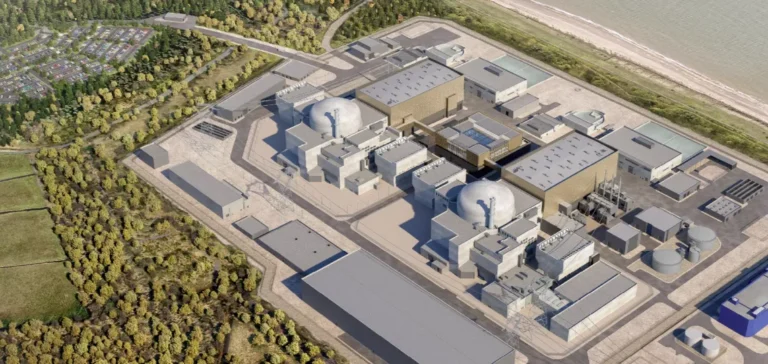More than 15,000 tonnes of crushed concrete from the Sizewell A nuclear site in Suffolk will be reused in the construction of the new Sizewell C power station. This transfer of materials is part of an agreement between Nuclear Restoration Services (NRS), a subsidiary of the UK’s Nuclear Decommissioning Authority, and the Sizewell C project leadership.
Dismantling of key Sizewell A structures
The recycled concrete comes mainly from the full demolition of the turbine hall, fire station, and electrical annexe at Sizewell A. The operations, completed in June, involved up to 700 kg of explosives to weaken four reinforced concrete plinths supporting two 65-tonne turbogenerators. The entire structure, comparable in size to a football field, was demolished using advanced methods, allowing for a significantly faster timeline than traditional decommissioning approaches.
In total, 17,000 tonnes of rubble were removed from the site. These materials were then crushed, tested, and certified under the Waste and Resources Action Programme (WRAP) quality protocol before being transported to Sizewell C to serve as recycled aggregate in the foundations of various technical platforms.
Waste processing and material recovery
Alongside the concrete, nearly 11,000 tonnes of scrap metal were extracted and sold, generating revenue to offset decommissioning costs. Approximately 35 miles of cables were also removed. This approach is progressively freeing up land at the Sizewell A site, which is scheduled for full restoration in the long term.
Sizewell A, which began operations in 1966 with two 210 MWe Magnox reactors, ceased functioning in 2006. The site was declared fuel-free in February 2015 following the final shipment of used fuel to the Sellafield reprocessing facility. Complete decommissioning of Sizewell A is planned for 2077.
Progress on the Sizewell C project
The Sizewell C project includes the construction of two European Pressurised Reactors (EPR) with a total capacity of 3.2 GW. Once operational, the plant is expected to supply electricity to up to six million homes. The project, based on the design of Hinkley Point C, aims to leverage lessons learned to shorten timelines and control costs.
Recycling concrete from Sizewell A represents a key step in operational site management for the UK nuclear industry, reflecting increased attention to material recovery from decommissioning while reducing reliance on newly sourced aggregates.






















